Abstract
OBJECTIVE: To define objectively and describe a set of clinically relevant health states that encompass the typical effects of depression on quality of life in an actual patient population. Our model was designed to facilitate the elicitation of patients' and the public's values (utilities) for outcomes of depression. DATA SOURCES: From the depression panel of the Medical Outcomes Study. Data include scores on the 12-Item Short Form Health Survey (SF-12) as well as independently obtained diagnoses of depression for 716 patients. Follow-up information, one year after baseline, was available for 166 of these patients. METHODOLOGY: We use k-means cluster analysis to group the patients according to appropriate dimensions of health derived from the SF-12 scores. Chi-squared and exact permutation tests are used to validate the health states thus obtained, by checking for baseline and longitudinal correlation of cluster membership and clinical diagnosis. PRINCIPAL FINDINGS: We find, on the basis of a combination of statistical and clinical criteria, that six states are optimal for summarizing the range of health experienced by depressed patients. Each state is described in terms of a subject who is typical in a sense that is articulated with our cluster-analytic approach. In all of our models, the relationship between health state membership and clinical diagnosis is highly statistically significant. The models are also sensitive to changes in patients' clinical status over time. CONCLUSIONS: Cluster analysis is demonstrably a powerful methodology for forming clinically valid health states from health status data. The states produced are suitable for the experimental elicitation of preference and analyses of costs and utilities.
Full text
PDF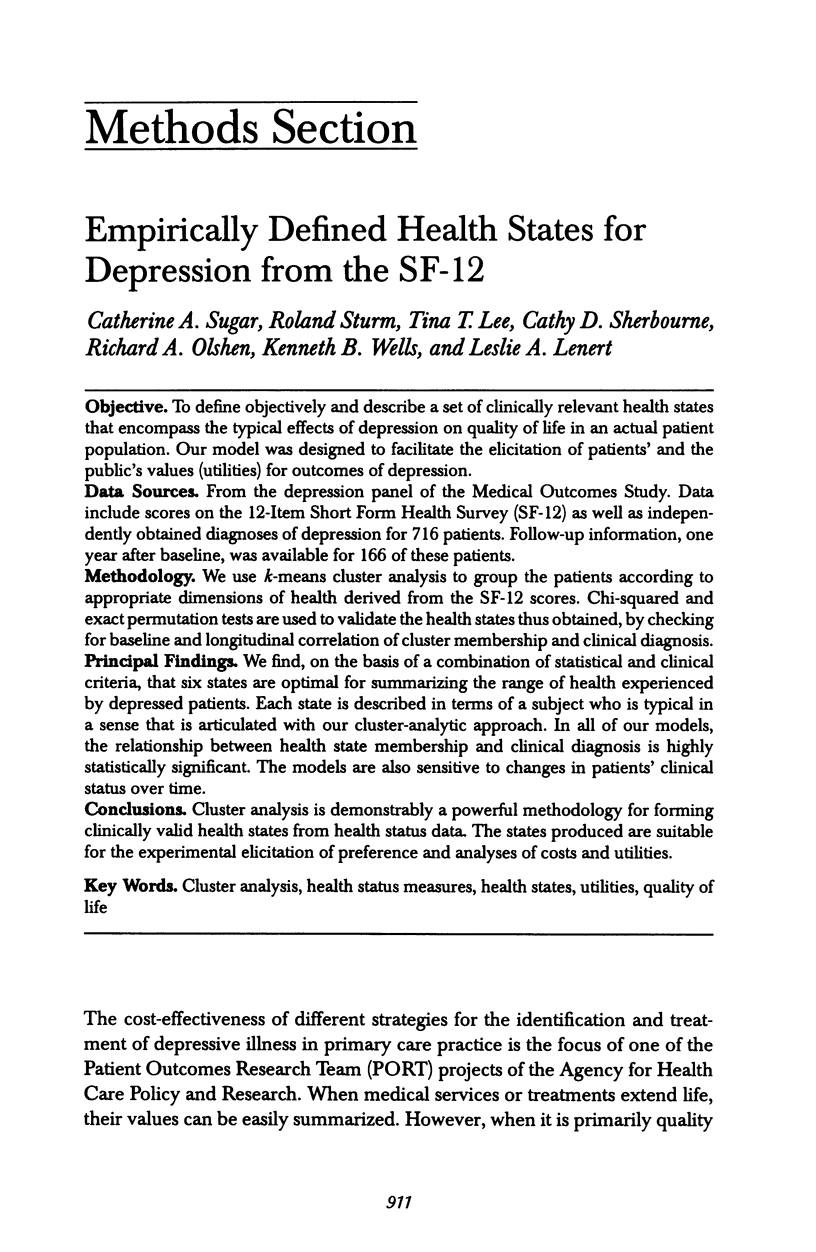
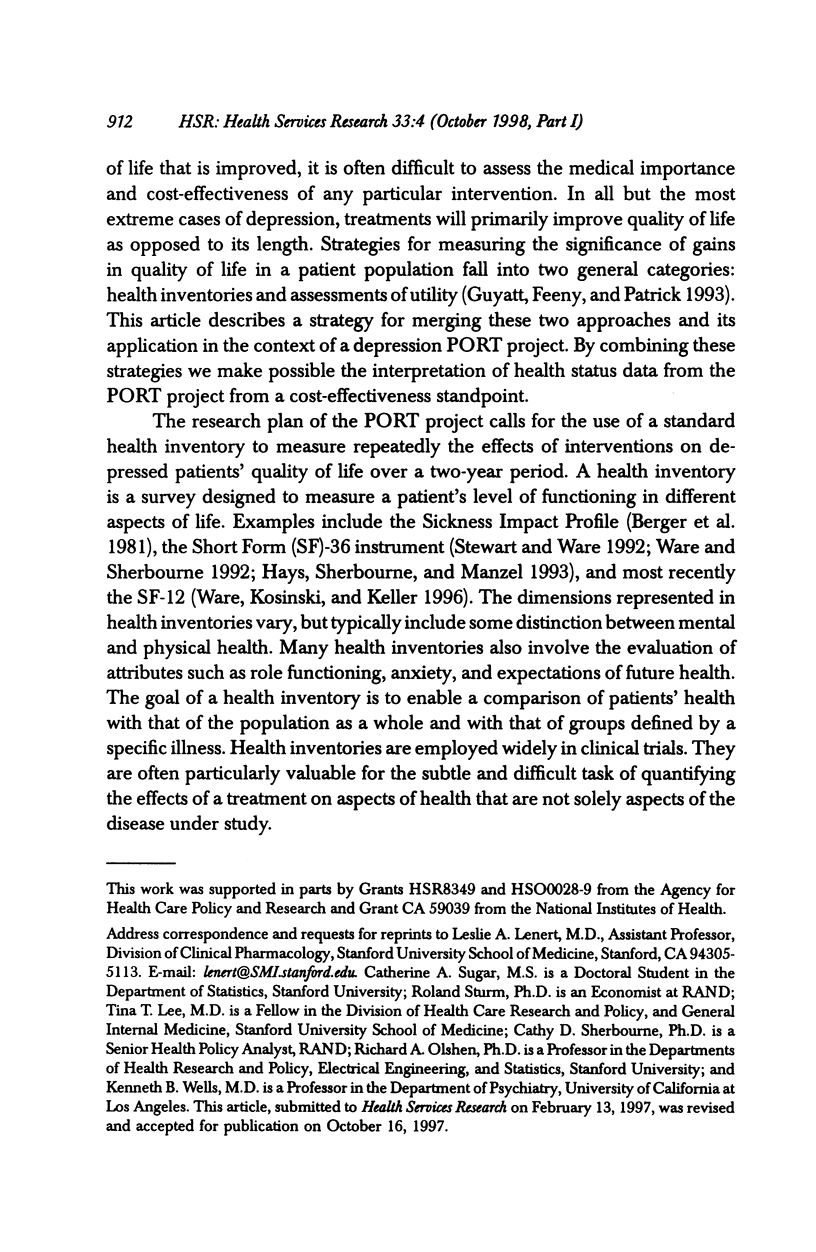
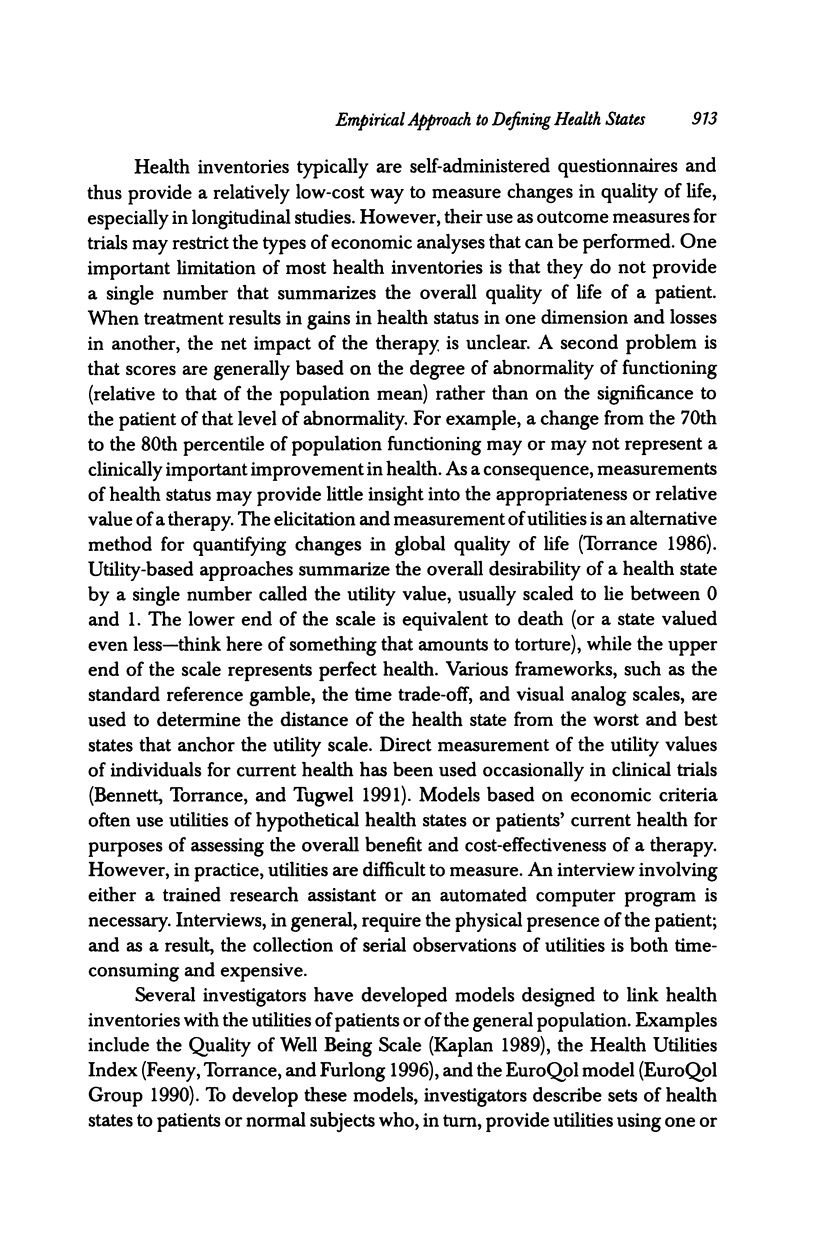
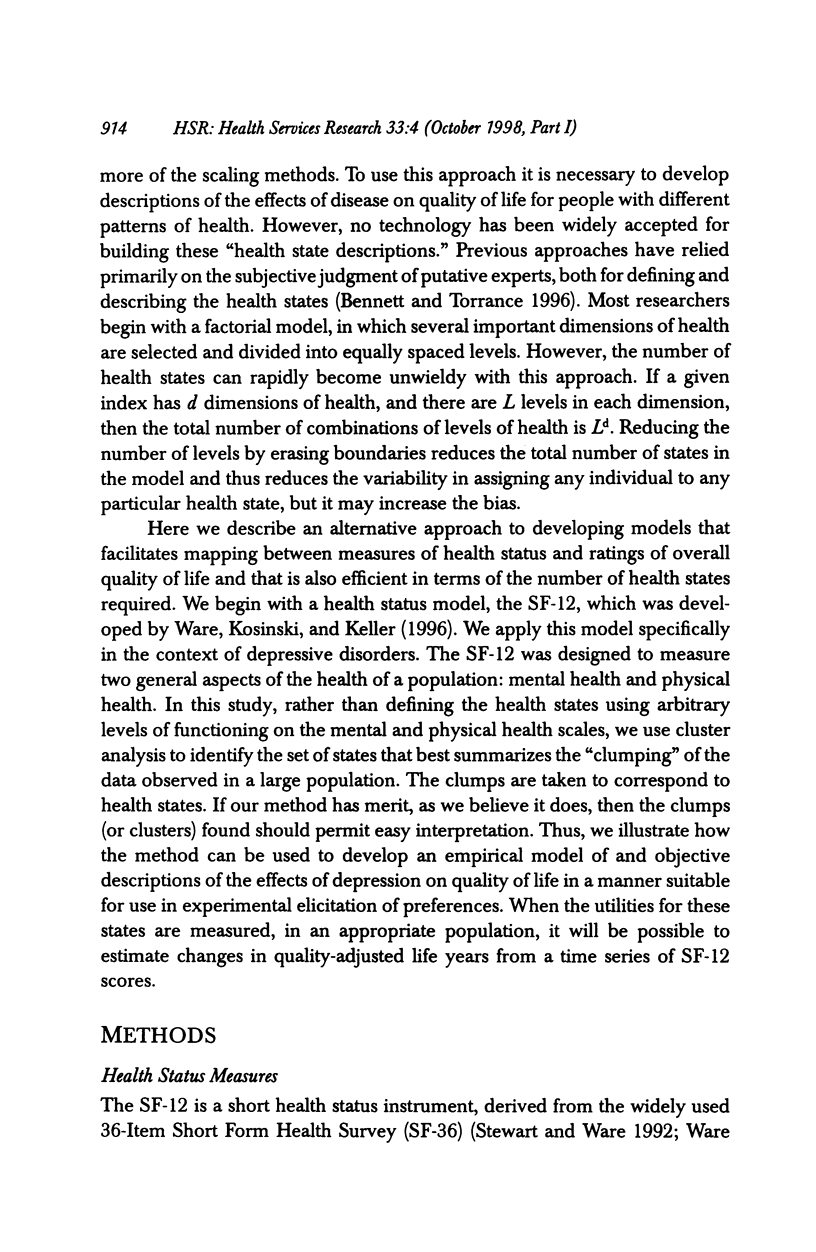
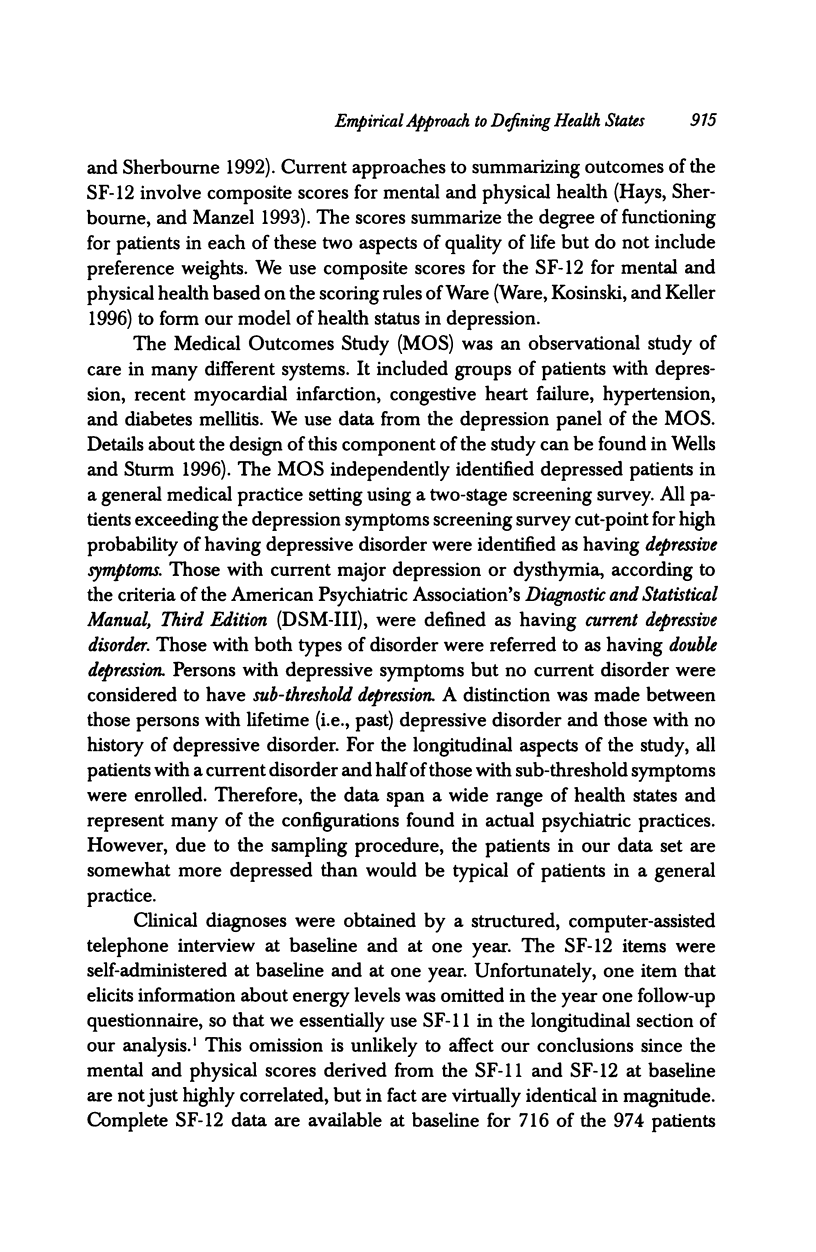
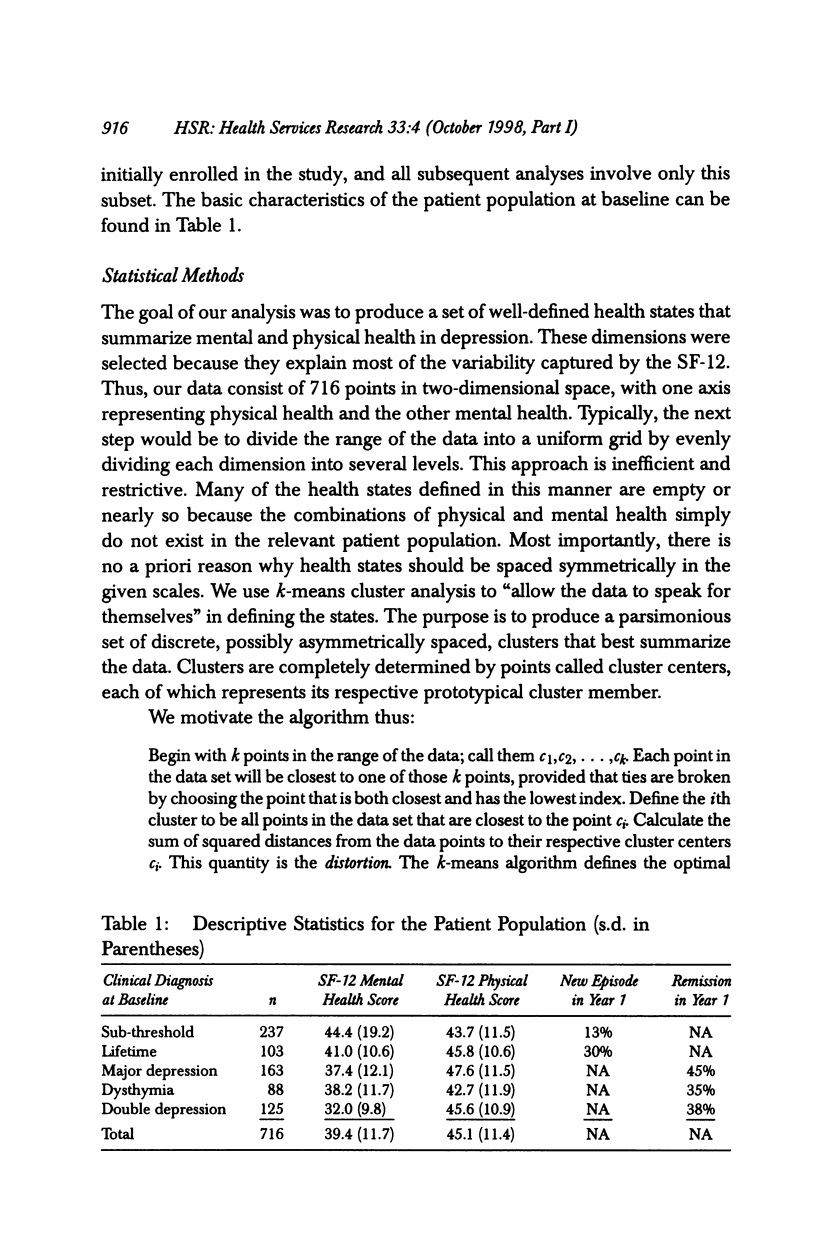
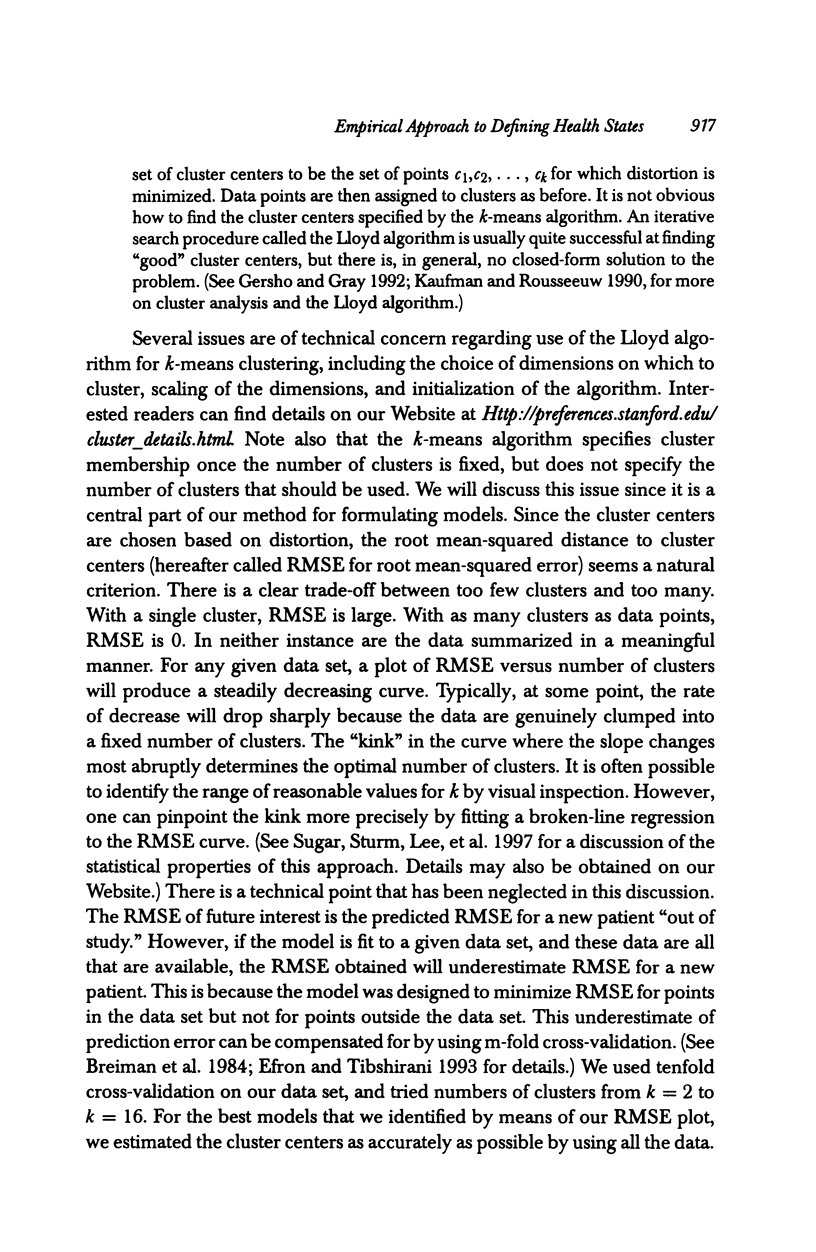
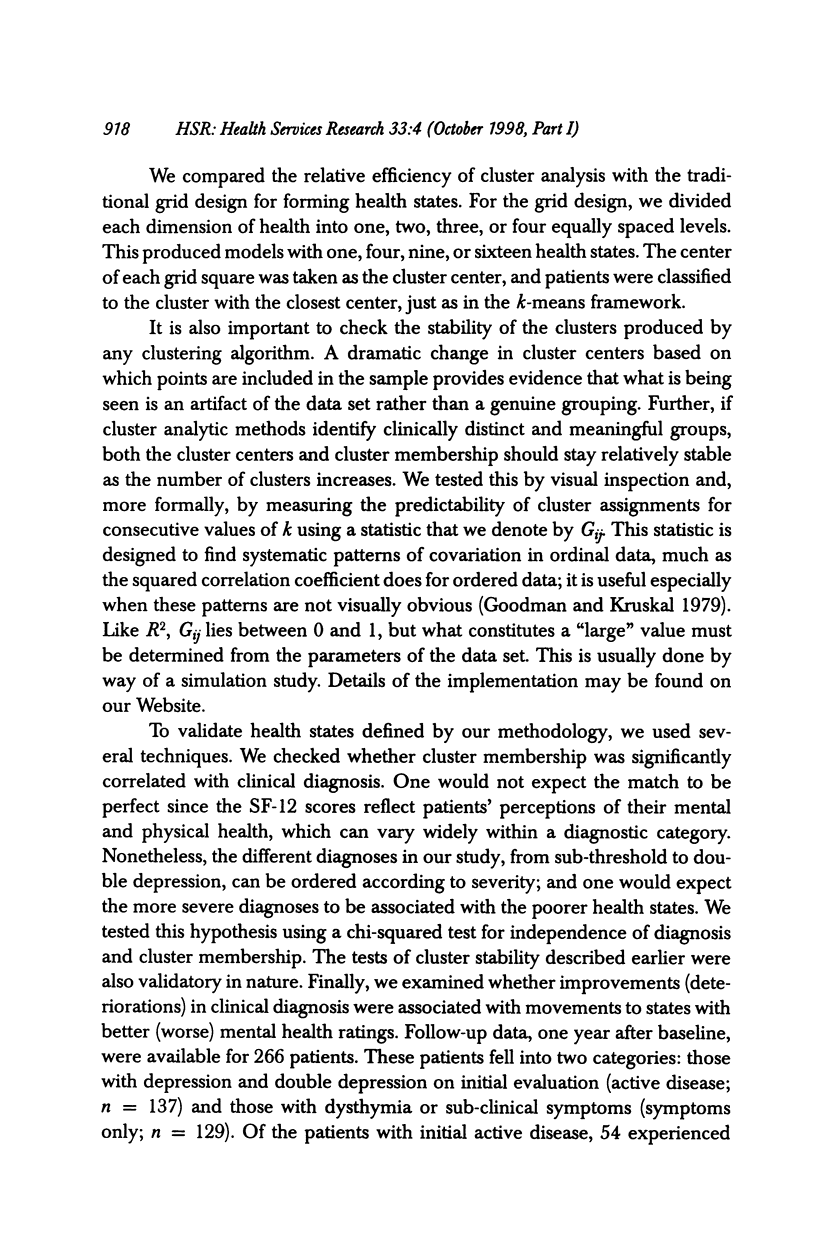
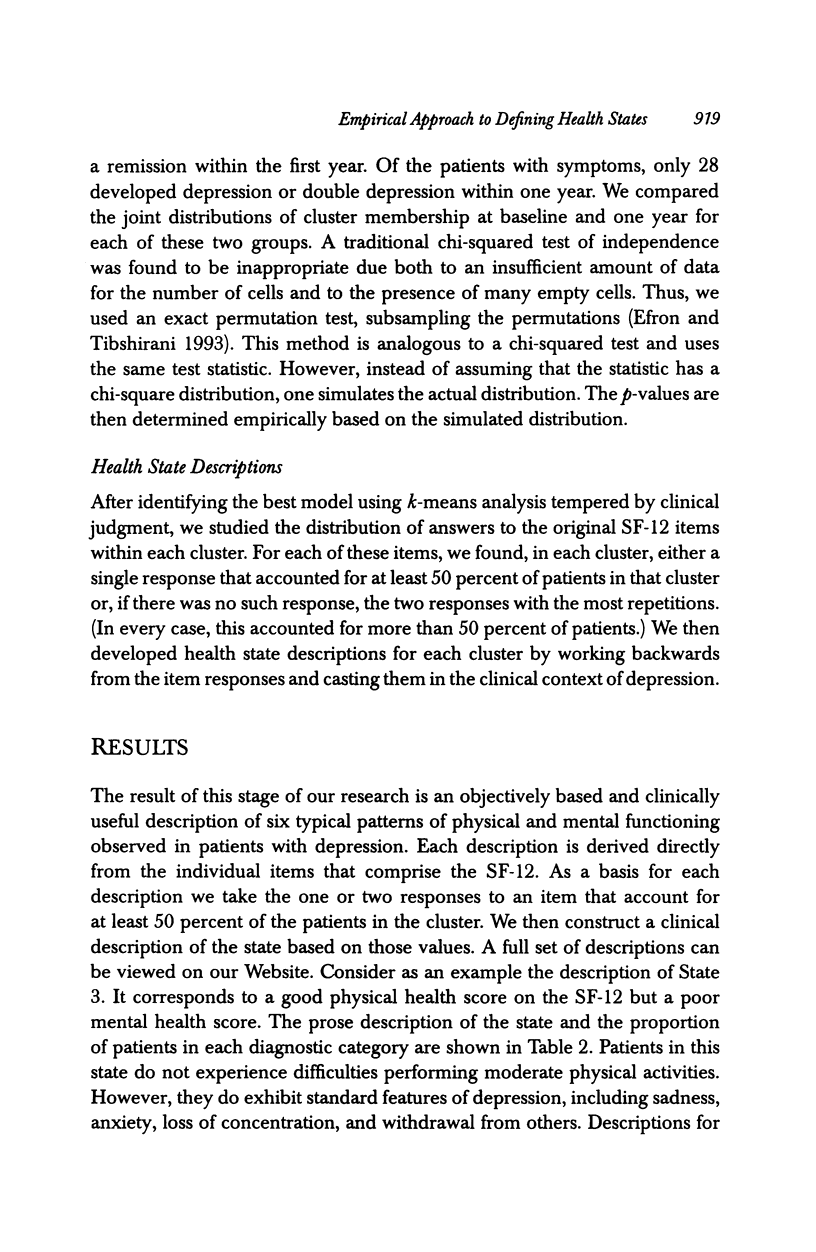
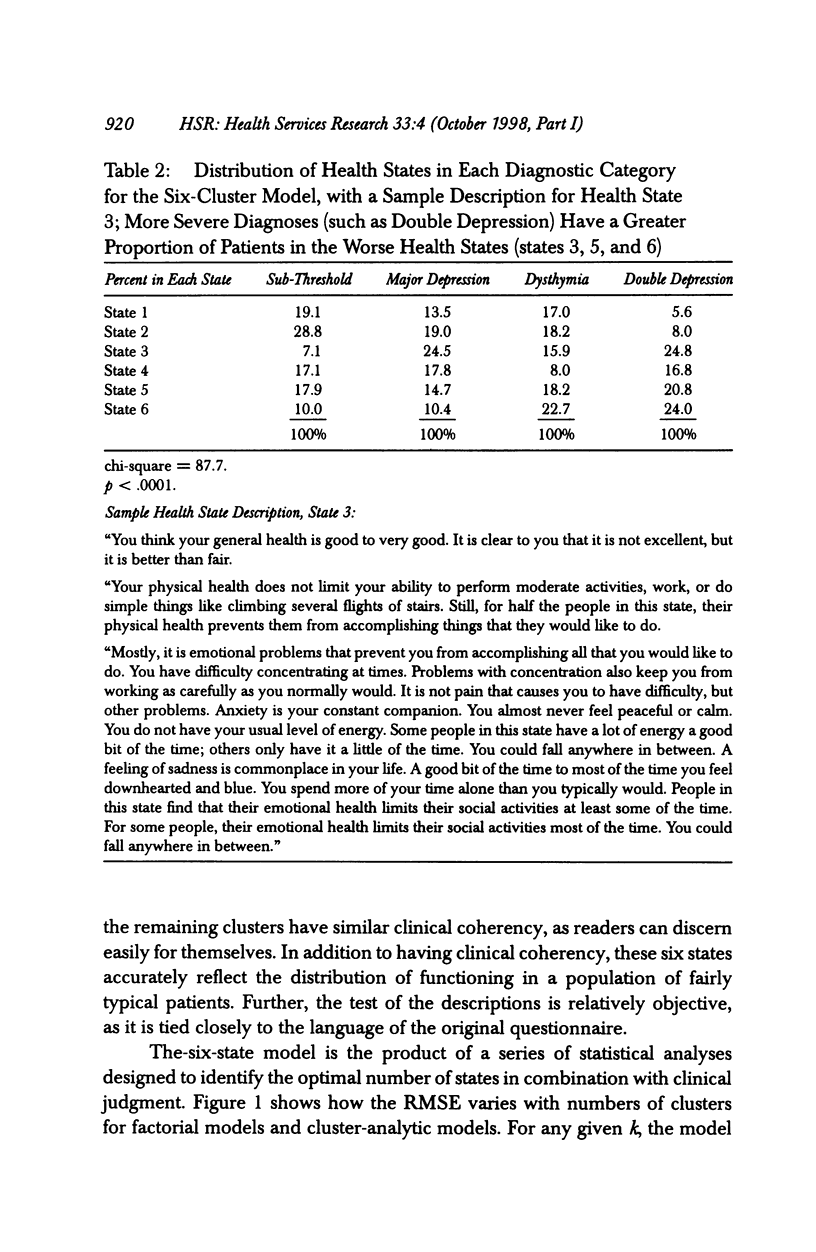
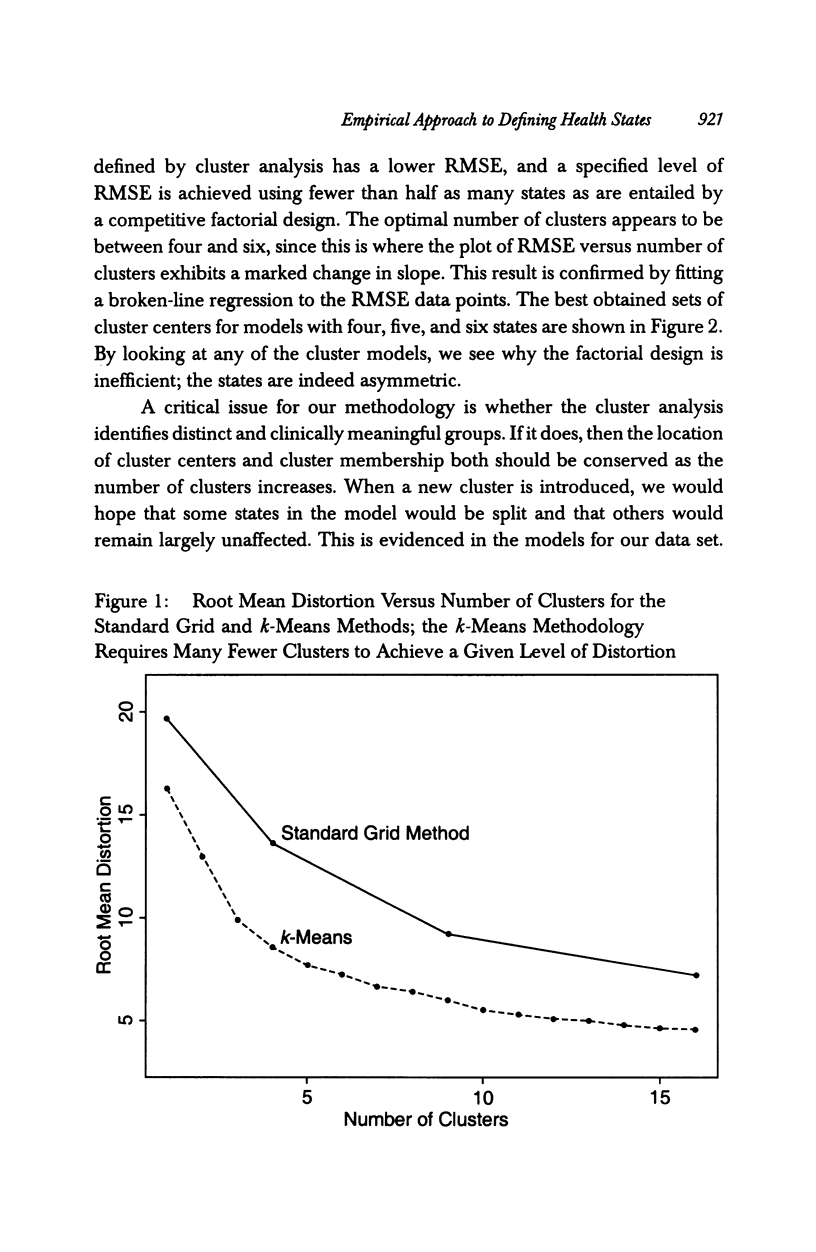
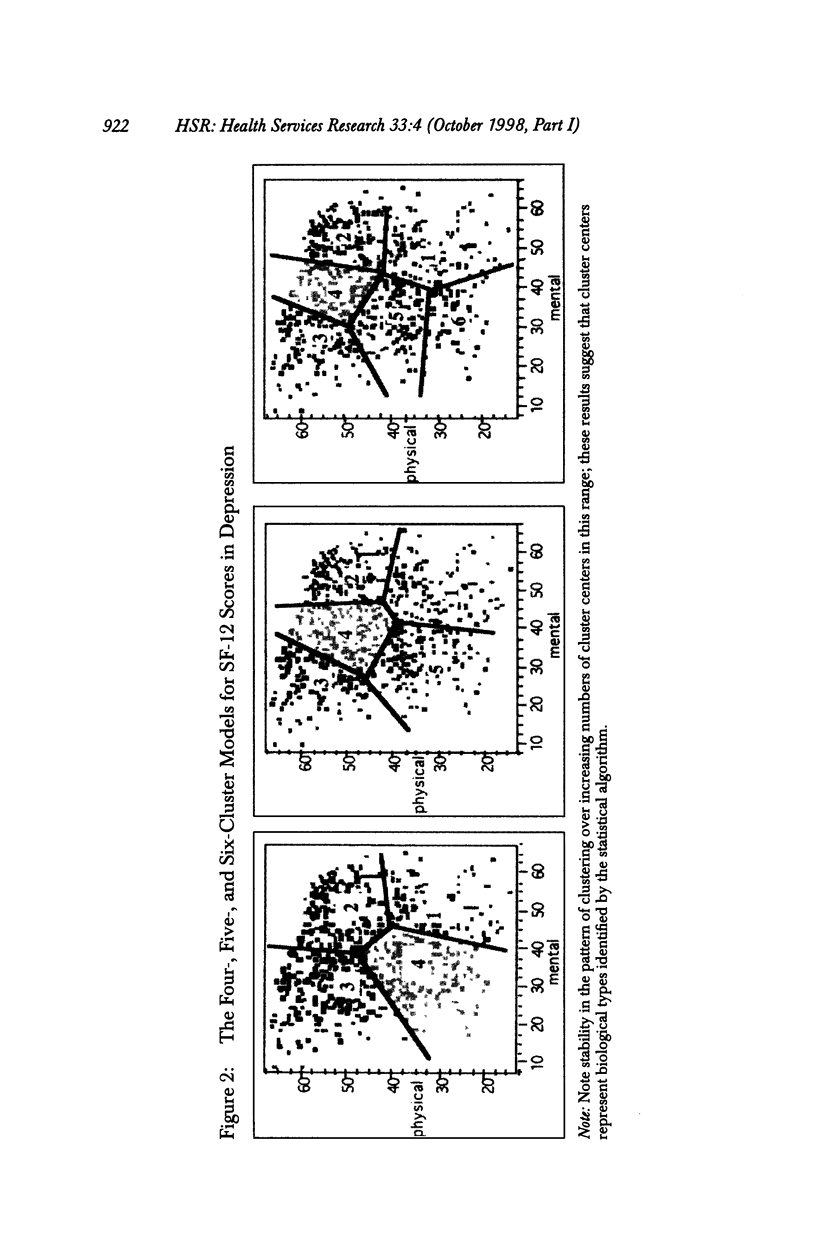
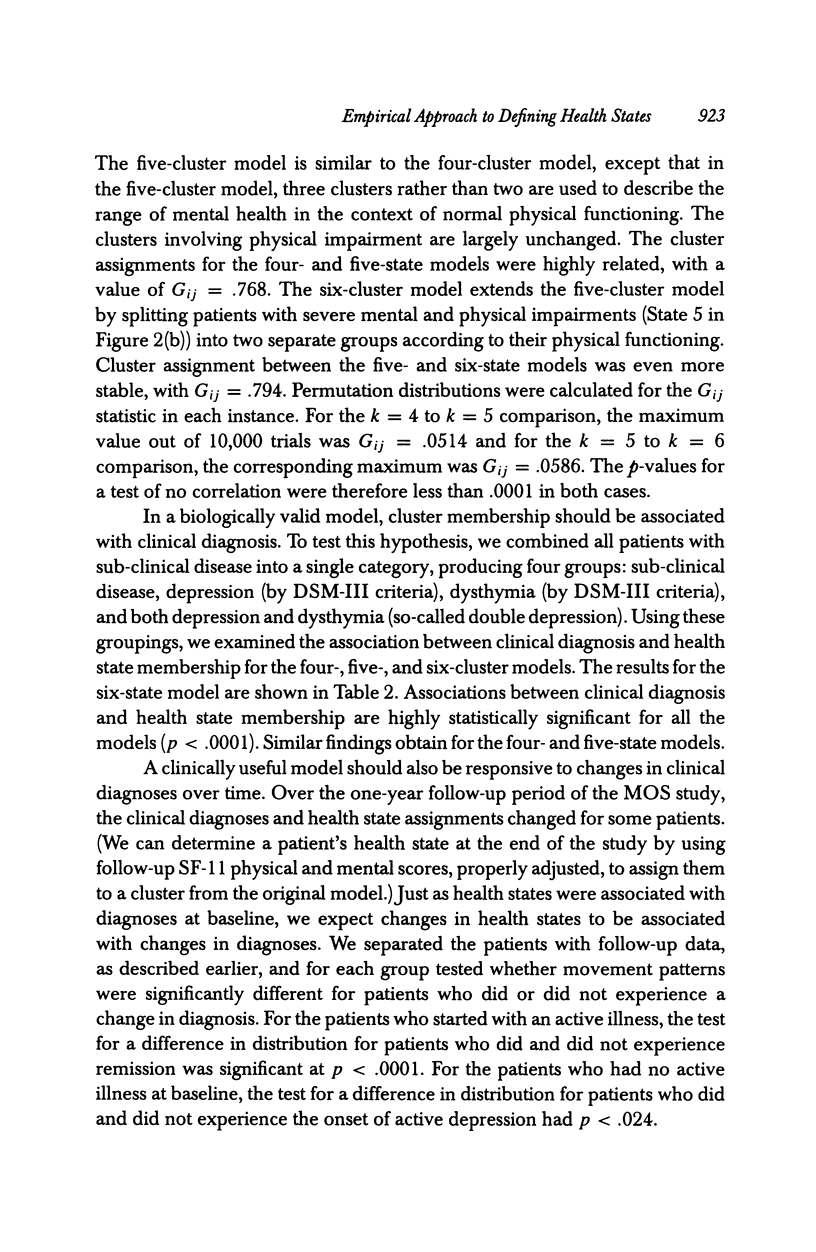
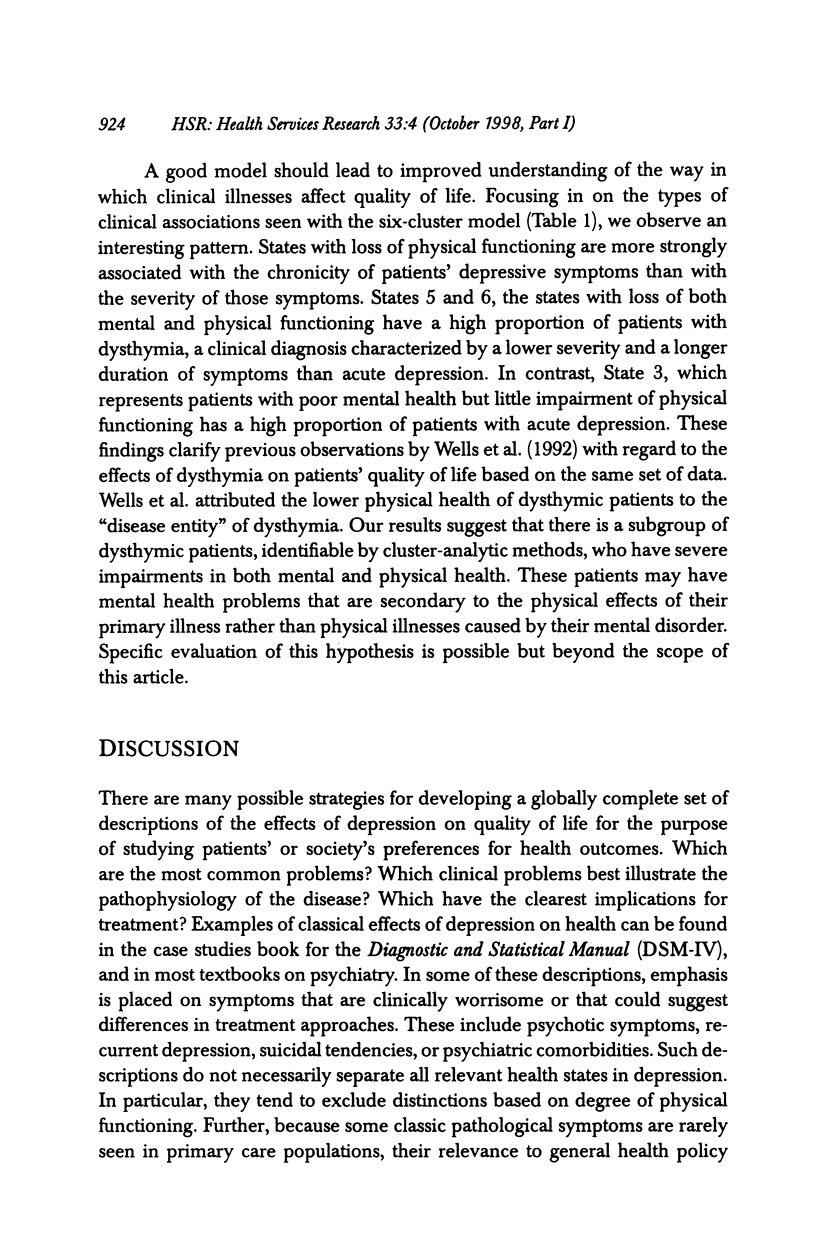
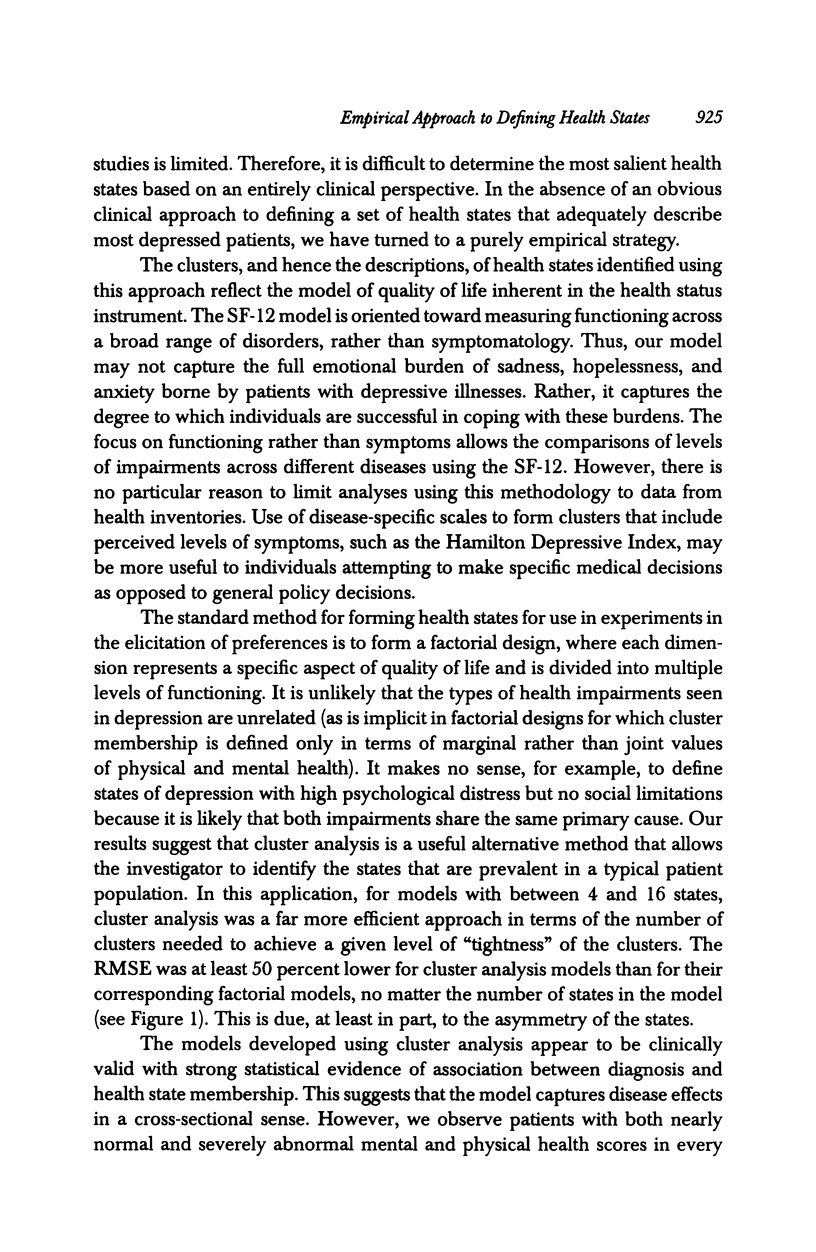
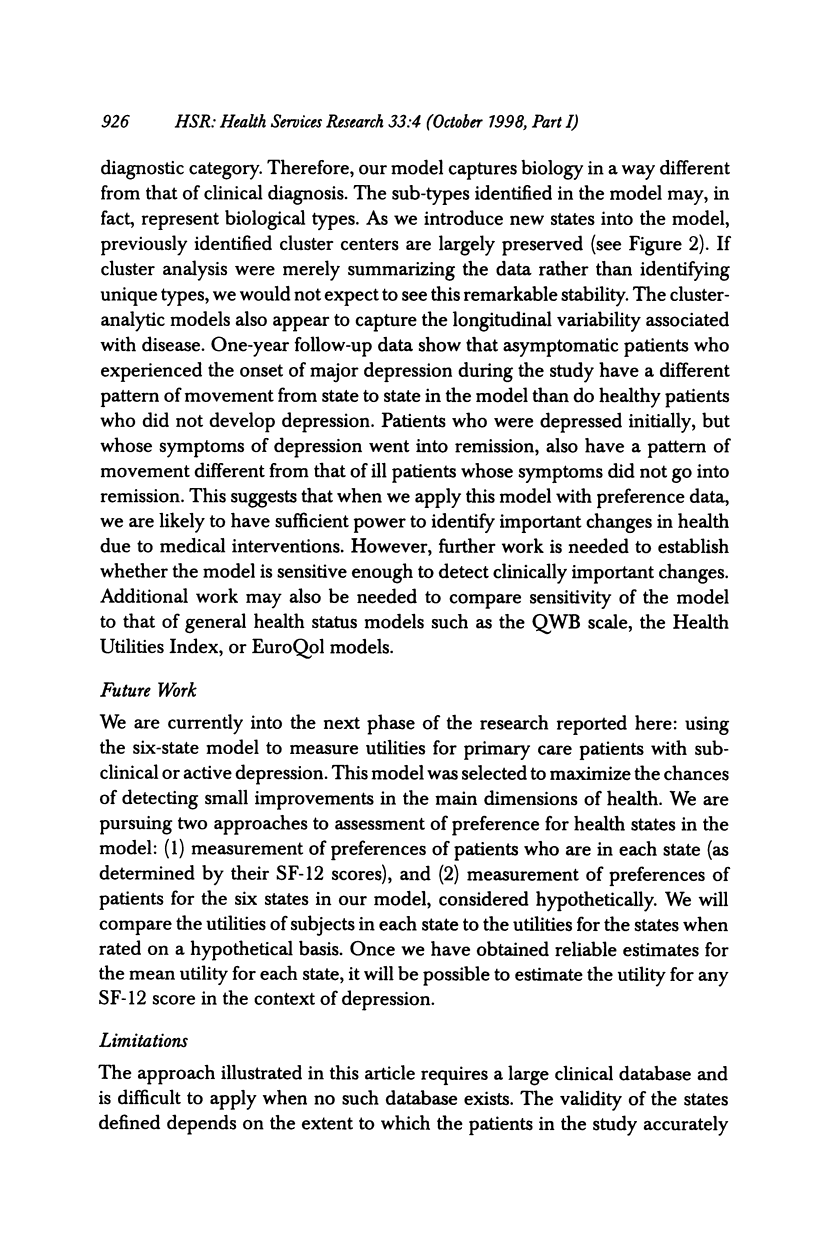
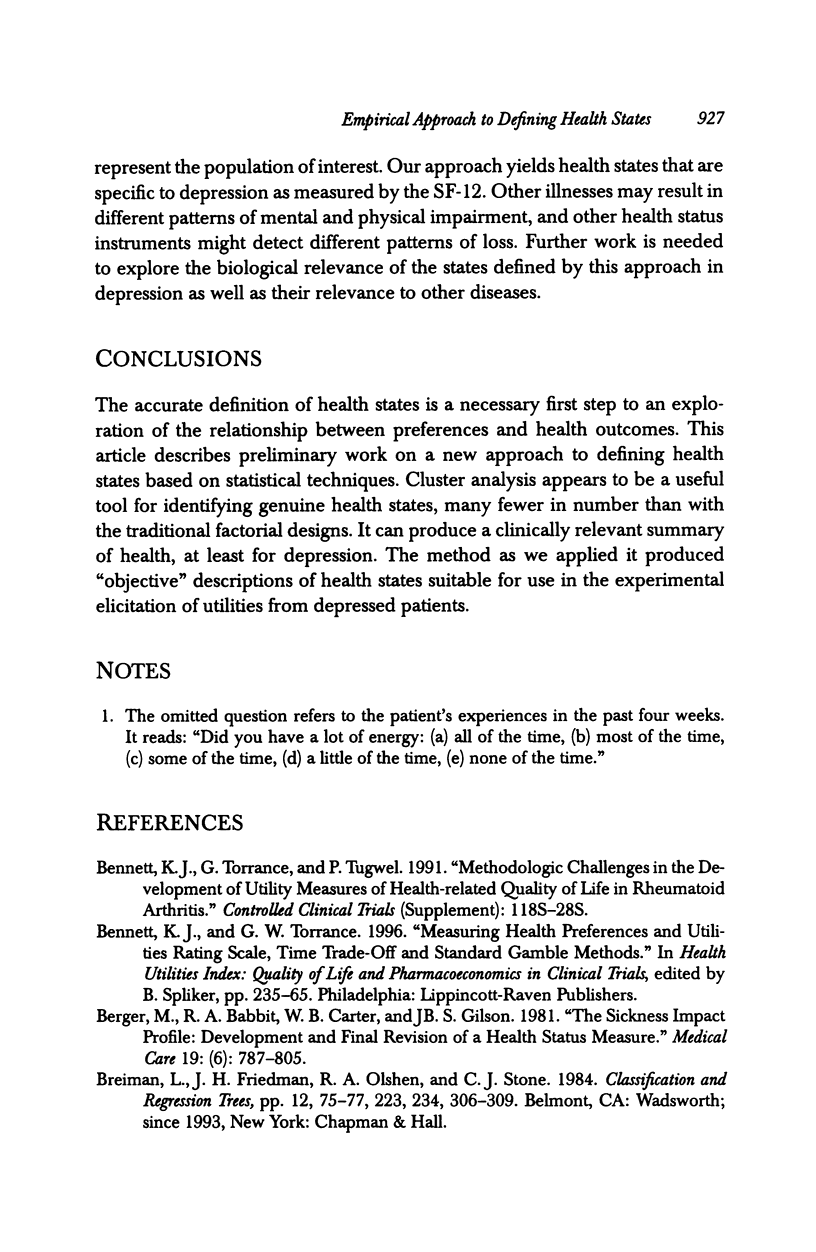
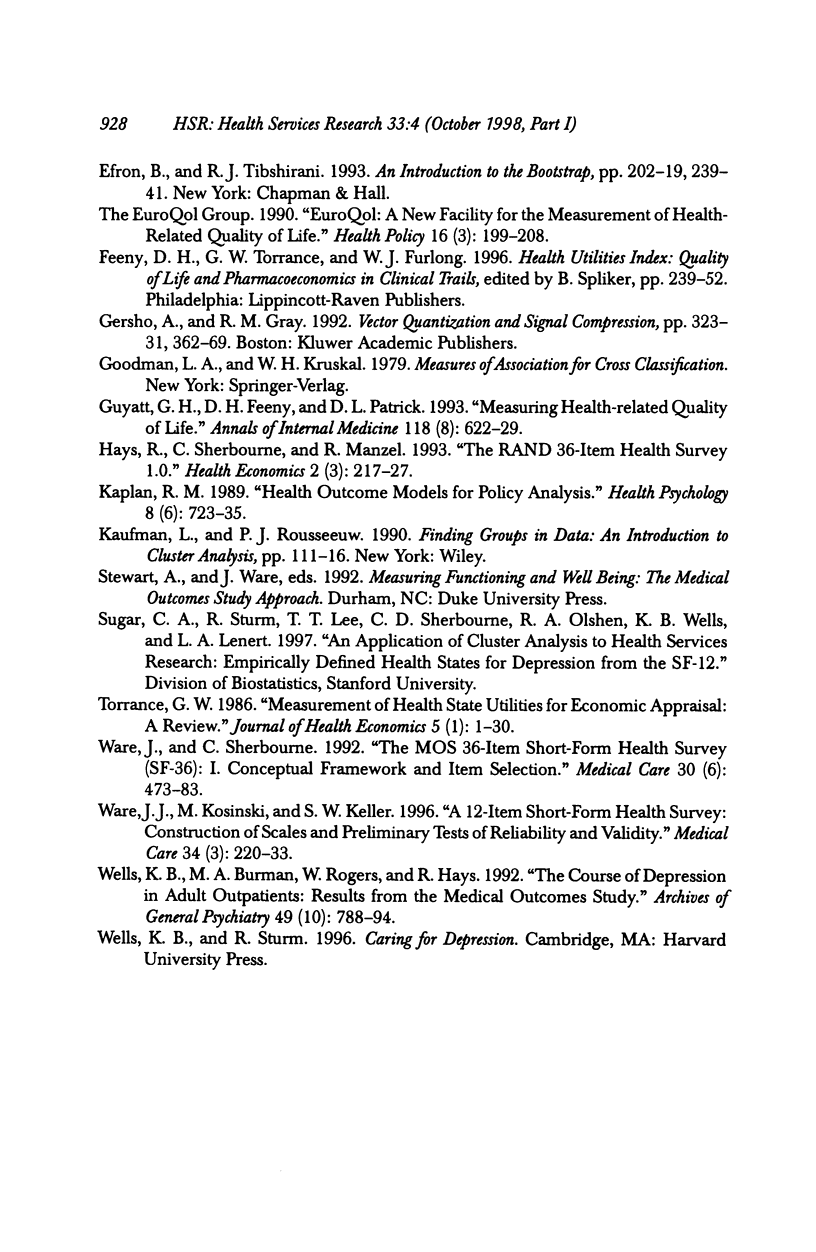
Images in this article
Selected References
These references are in PubMed. This may not be the complete list of references from this article.
- Bennett K., Torrance G., Tugwell P. Methodologic challenges in the development of utility measures of health-related quality of life in rheumatoid arthritis. Control Clin Trials. 1991 Aug;12(4 Suppl):118S–128S. doi: 10.1016/s0197-2456(05)80017-0. [DOI] [PubMed] [Google Scholar]
- Bergner M., Bobbitt R. A., Carter W. B., Gilson B. S. The Sickness Impact Profile: development and final revision of a health status measure. Med Care. 1981 Aug;19(8):787–805. doi: 10.1097/00005650-198108000-00001. [DOI] [PubMed] [Google Scholar]
- Guyatt G. H., Feeny D. H., Patrick D. L. Measuring health-related quality of life. Ann Intern Med. 1993 Apr 15;118(8):622–629. doi: 10.7326/0003-4819-118-8-199304150-00009. [DOI] [PubMed] [Google Scholar]
- Hays R. D., Sherbourne C. D., Mazel R. M. The RAND 36-Item Health Survey 1.0. Health Econ. 1993 Oct;2(3):217–227. doi: 10.1002/hec.4730020305. [DOI] [PubMed] [Google Scholar]
- Kaplan R. M. Health outcome models for policy analysis. Health Psychol. 1989;8(6):723–735. [PubMed] [Google Scholar]
- Torrance G. W. Measurement of health state utilities for economic appraisal. J Health Econ. 1986 Mar;5(1):1–30. doi: 10.1016/0167-6296(86)90020-2. [DOI] [PubMed] [Google Scholar]
- Ware J. E., Jr, Sherbourne C. D. The MOS 36-item short-form health survey (SF-36). I. Conceptual framework and item selection. Med Care. 1992 Jun;30(6):473–483. [PubMed] [Google Scholar]
- Ware J., Jr, Kosinski M., Keller S. D. A 12-Item Short-Form Health Survey: construction of scales and preliminary tests of reliability and validity. Med Care. 1996 Mar;34(3):220–233. doi: 10.1097/00005650-199603000-00003. [DOI] [PubMed] [Google Scholar]
- Wells K. B., Burnam M. A., Rogers W., Hays R., Camp P. The course of depression in adult outpatients. Results from the Medical Outcomes Study. Arch Gen Psychiatry. 1992 Oct;49(10):788–794. doi: 10.1001/archpsyc.1992.01820100032007. [DOI] [PubMed] [Google Scholar]



